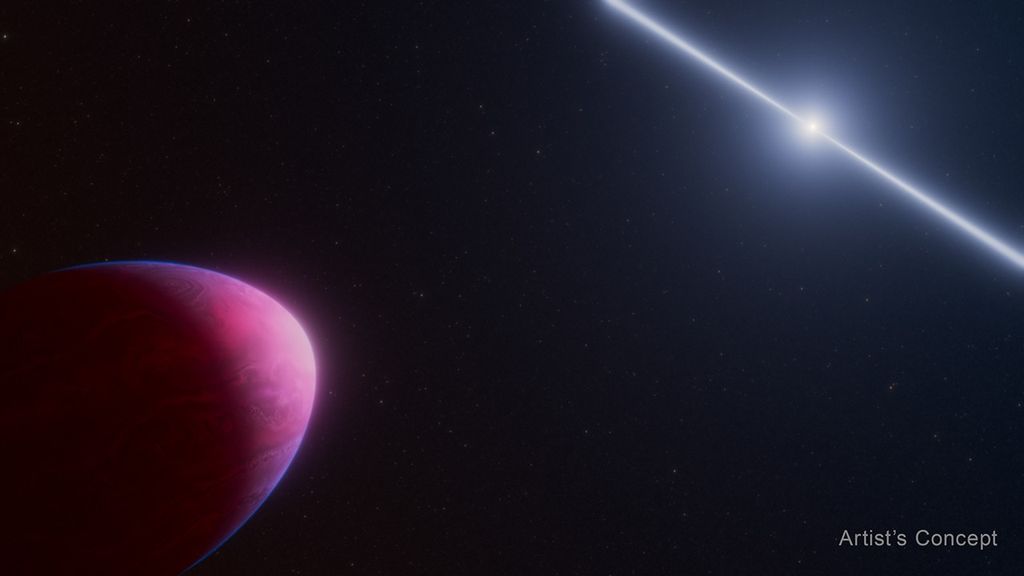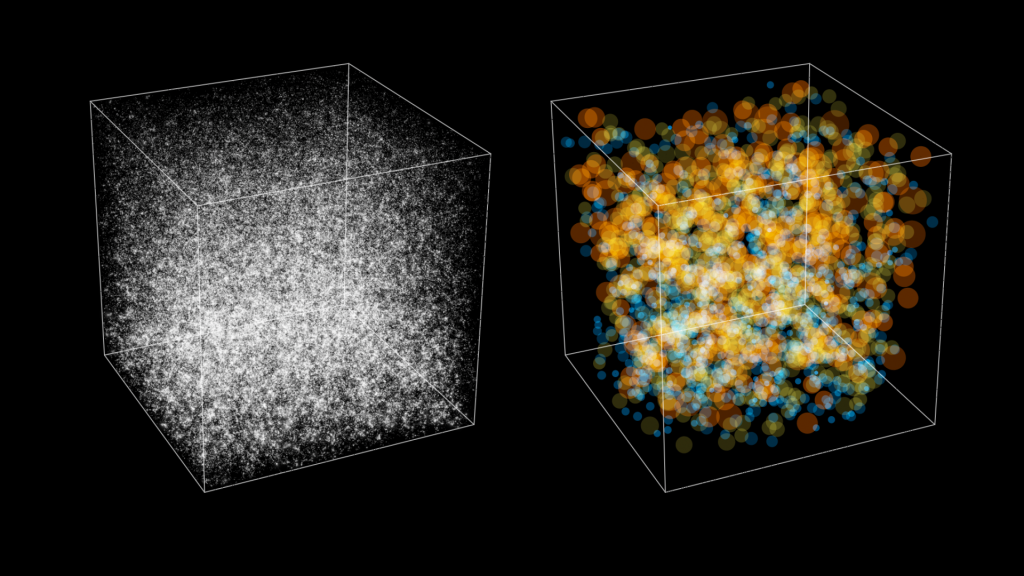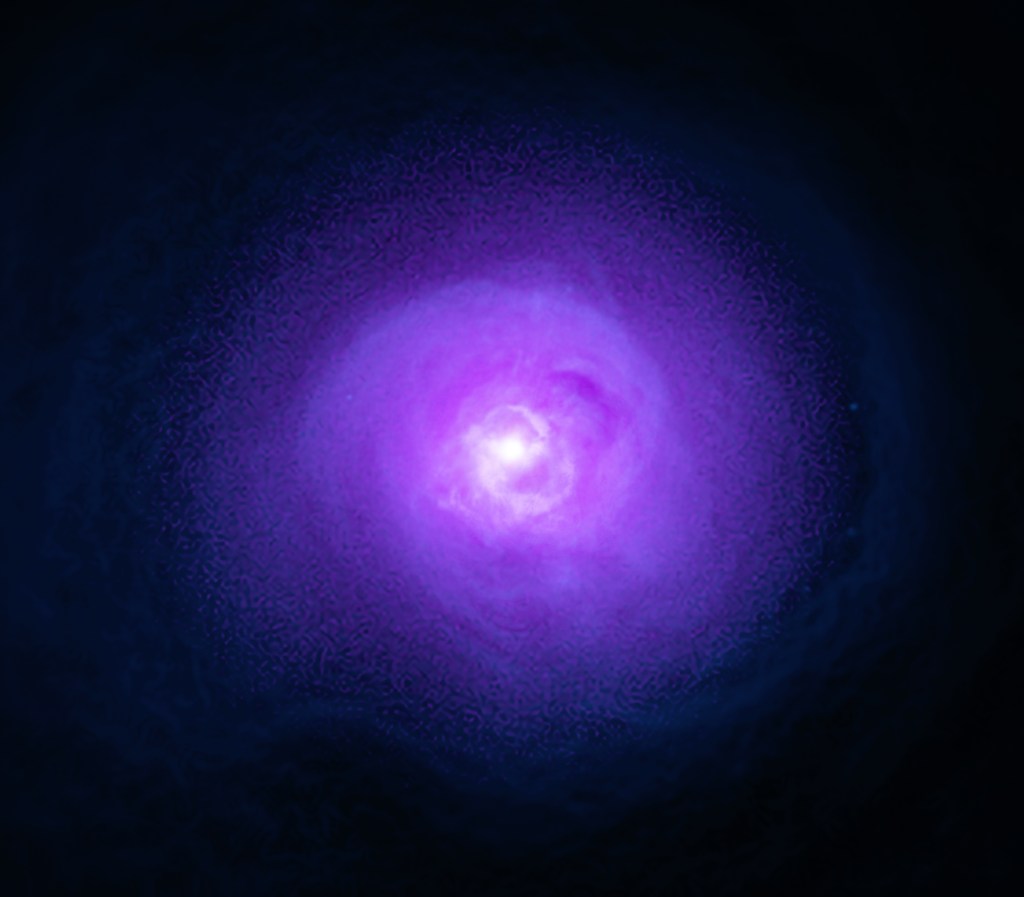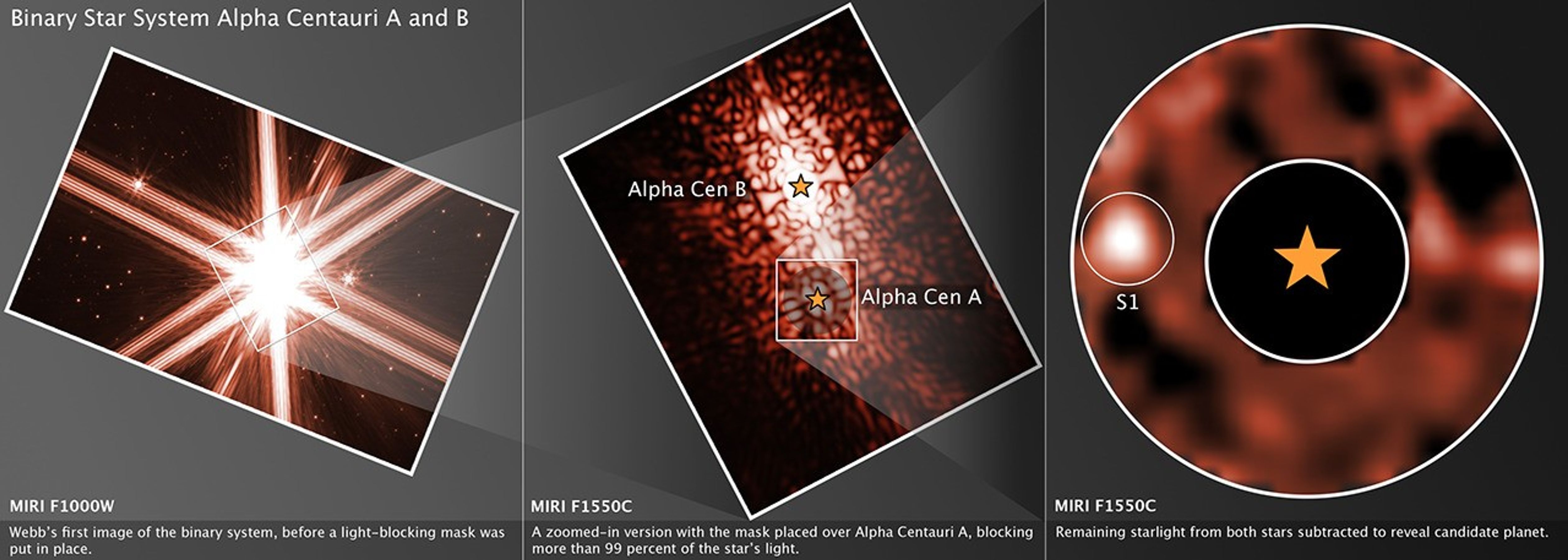1 min read
Alpha Centauri 3 Panel (DSS, Hubble, Webb)

This image shows the Alpha Centauri star system from several different ground- and space-based observatories: the Digitized Sky Survey (DSS), NASA’s Hubble Space Telescope, and NASA’s James Webb Space Telescope. Alpha Centauri A is the third brightest star in the night sky, and the closest Sun-like star to Earth.
The ground-based image from DSS shows the triple system as a single source of light, while Hubble resolves the two Sun-like stars in the system, Alpha Centauri A and Alpha Centauri B.
The image from Webb’s MIRI (Mid-Infrared Instrument), which uses a coronagraphic mask to block the bright glare from Alpha Centauri A, reveals a potential planet orbiting the star.
About the Object
- R.A. PositionR.A. PositionRight ascension – analogous to longitude – is one component of an object's position.14:39:37.08
- Dec. PositionDec. PositionDeclination – analogous to latitude – is one component of an object's position.-60:48:56.29
- ConstellationConstellationOne of 88 recognized regions of the celestial sphere in which the object appears.Centaurus
- DistanceDistanceThe physical distance from Earth to the astronomical object. Distances within our solar system are usually measured in Astronomical Units (AU). Distances between stars are usually measured in light-years. Interstellar distances can also be measured in parsecs.4 light-years
About the Data
- Data DescriptionData DescriptionProposal: A description of the observations, their scientific justification, and the links to the data available in the science archive.
Science Team: The astronomers who planned the observations and analyzed the data. "PI" refers to the Principal Investigator.This image was created with Webb data from proposal: 1618 (C. Beichman). Image processing: Joseph DePasquale (STScI).
- InstrumentInstrumentThe science instrument used to produce the data.MIRI
- Exposure DatesExposure DatesThe date(s) that the telescope made its observations and the total exposure time.July-August, 2024
- FiltersFiltersThe camera filters that were used in the science observations.F1500C
- Object NameObject NameA name or catalog number that astronomers use to identify an astronomical object.Alpha Centauri AB
- Object DescriptionObject DescriptionThe type of astronomical object.Binary star system
- Release DateAugust 7, 2025
- Science ReleaseNASA’s Webb Finds New Evidence for Planet Around Closest Solar Twin
- CreditNASA, ESA, CSA, Aniket Sanghi (Caltech), Charles Beichman (NExScI, NASA/JPL-Caltech), Dimitri Mawet (Caltech); Image Processing: Joseph DePasquale (STScI)

This image is acquired by the MIRI coronagraphic instrument on the James Webb Space Telescope. The color results from assigning a warm/red color map to a monochromatic (grayscale) image.
Related Images & Videos
Share
Details
Laura Betz
NASA’s Goddard Space Flight Center
Greenbelt, Maryland
laura.e.betz@nasa.gov
NASA, ESA, CSA, Aniket Sanghi (Caltech), Charles Beichman (NExScI, NASA/JPL-Caltech), Dimitri Mawet (Caltech)
Joseph DePasquale (STScI)






























